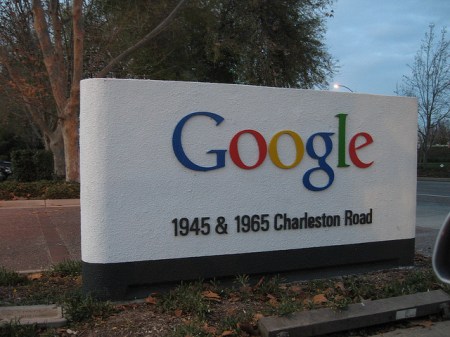Posted on August 21, 2013 by creeping
Except Vonage – if they can be considered major anything. Details below. via FFA.
CurrentTV officially became Al Jazeera America and started airing Al Jazeera content on August 20, 2013.
Al Jazeera America made their start with no major companies advertising on the network thanks to the support of thousands of Florida Family Association supporters.
Florida Family Association’s:
- Weekly contact with top officials at the companies that advertised on Al Jazeera America influenced 105 companies to stop advertising.
- Supporters who sent emails to companies that advertised on Al Jazeera America influenced 13 companies to stop advertising.
- Overall efforts influenced 118 companies to stop advertising. See list posted below.
Florida Family Association tapes ten hours of programing on Al Jazeera America (formerly CurrentTV) every day. The Florida Family Association office communicates with each advertiser no less than once per week. This monitoring effort and contact with companies influenced 105 companies to stop advertising on Al Jazeera America.
Companies that continue to advertise after receiving emails from the Florida Family Association office are categorized as a major corporation, smaller company or non-profit organization (free) and rated from most frequent to least frequent. Florida Family Association features the top advertisers in email campaigns and web articles. Major companies were targeted one at a time because there were so few of them. Some smaller companies, even with frequent ads, may never be targeted with a campaign because of their inferior reputation.
Florida Family Association launched thirteen email campaigns that were all successful in influencing the thirteen companies to stop advertising on Al Jazeera America thanks to thousands emails sent by FFA supporters. All of the following companies, targeted in an email campaign, stopped advertising: ADT, Allstate, Chrysler Group (Dodge Dart, Fiat) E-Trade, Foster Grant, Hershey, KIA, Nestle (Gerber Life Insur.), Pfizer, P&G (Gillette), Reckitt Benckiser plc, Red Lobster and Reputation.com.
Additionally, many companies, more than for any other issue, contacted the Florida Family Association office to communicate their decision not to advertise again. The companies that contacted Florida Family Association to communicate their intentions to pull off of Al Jazeera America include: Approved Colleges, Binder & Binder, Craftmatic, Denny’s, DeVry University, Disaronno, Dream Brands, FabriClear, Harvest Direct, Heineken, iCan, Laser Spine Institute, Life Alert, National Collector’s Mint, Plymouth Direct, PODS, TD Ameritrade and The Tax Resolvers.
The use of advertising time by Al Jazeera America has been measured as follows: 18% for promotion of the channel and/or cable company, 7% for promotion of five non-profit organizations and 75% for advertising of sixteen small companies. The breakdown for the channel’s advertising time is posted in the second table below.
IT IS IMPORTANT to encourage Corporate America NOT to advertise on Al Jazeera America because:
- American consumer dollars used to pay for goods and services provided by Corporate America should not go to support Al Jazeera.
- Corporate America brands appearing on the channel give implied approval to Al Jazeera.
- The policies of Corporate America may eventually be challenged to conform to the standards of Al Jazeera in order to reach the growing Muslim population in the United States.
REGARDLESS OF HOW MUCH OIL MONEY Al Jazeera spends to keep their American channel alive Corporate America must be vigorously challenged not to support the channel for the above reasons.
…
Florida Family Association deeply appreciates the support of CreepingSharia and BareNakedIslam.com for posting Floridafamily.org reports regarding these web campaigns that influenced some many companies to stop advertising on Al Jazeera America.
Al Jazeera is a news company that is owned by a non-democratic, monarch styled emirate who does not afford citizens freedom of the press, espouses Islamic Sharia law, backs the leader of Hamas and supports the Muslim Brotherhood. Al Jazeera, headquartered in the Middle East (Doha, Qatar), purchased the CurrentTV channel in December 2012. The CurrentTV name was changed to Al Jazeera America on August 20, 2013.
Support the Florida Family Association and their tremendous effort to keep al Jazeera’s anti-American propaganda out of the U.S. and subscribe to their mailing list to participate in their easy to use email campaigns that have immediate impact.
More via Breitbart.com: Al Jazeera America Dumped By 5 Million Customer Cable Provider
The Wrap reports that a mere hour before Al Jazeera America launched Tuesday, cable provider AT&T U-Verse dropped the Qatar-financed cable news channel over a “contract dispute.” This is a loss of five million potential households.
As of July 2013, U-Verse boasted over 5 million TV customers, though not all of them are subscribers to the package that contains Al Jazeera America. AT&T would not specify how many are subscribers to that package.
Thus far, after only a few hours on the air, AJA’s launch is receiving widespread criticism. After boasting that AJA would deliver “fact-based, unbiased and in-depth news,” the network’s first guest was Stephen Walt, who is infamous for what the Atlantic’s Jeffrey Goldberg describes as “Jew baiting.”
AJA’s very first lead story Tuesday, was a sympathetic look at “anti-American terrorists detained on the battlefield for actions taken by U.S. medical personnel”.
Update: Vonage was the first and only new major corporation that advertised during the starting days of Al Jazeera America.









